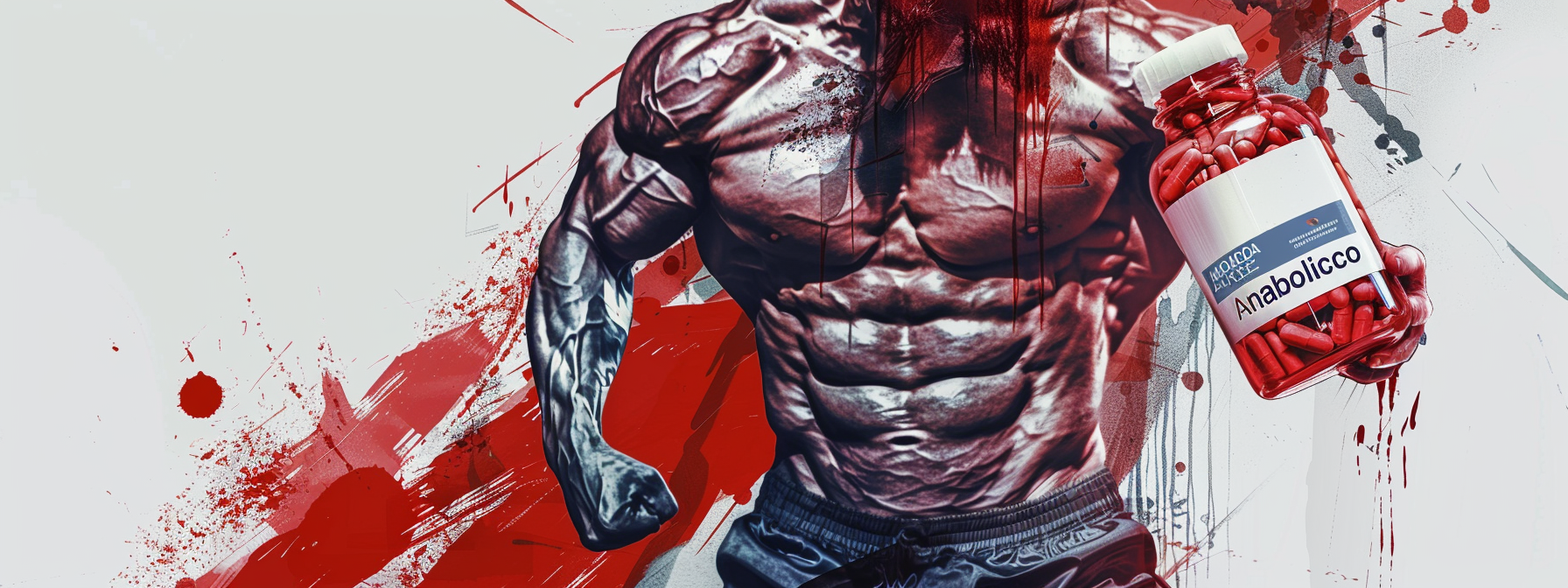Anabolic steroid cycles refer to the period during which steroids are used to enhance muscle growth, performance, and recovery. The length of a steroid cycle can significantly impact both the effectiveness of the steroids and the potential for adverse effects.
This guide aims to provide insights into safe cycle lengths based on experience levels and the factors that influence these lengths, ensuring users avoid health complications.
Safe Cycle Lengths
Recommended Cycle Lengths by Experience Level
Beginner Cycles
- Typical Length: 6-8 weeks
- Rationale: Shorter cycles are recommended for beginners to allow the body to adapt to the steroids and to minimize the risk of side effects. A typical beginner cycle includes compounds like Testosterone Propionate, which has a short half-life and requires more frequent injections, making it easier to manage and adjust dosages if necessary.
Intermediate Cycles
- Adjustments and Recommended Durations: 8-12 weeks
- Rationale: Intermediate users, having built some tolerance, can extend their cycles to 8-12 weeks. This duration is optimal for achieving noticeable muscle gains and strength improvements while still maintaining manageable side effects. Intermediate cycles often incorporate compounds like Testosterone Enanthate and Masteron, allowing for substantial muscle retention and fat loss.
Advanced Cycles
- Maximum Safe Lengths and Considerations: 12-16 weeks
- Rationale: Advanced users with extensive experience may opt for longer cycles of up to 16 weeks. These extended cycles can result in significant muscle gains but also come with increased risks of long-term health issues such as cardiovascular problems and liver toxicity. Advanced users should closely monitor their health and include rigorous post-cycle therapy (PCT) to mitigate adverse effects.
Factors Influencing Cycle Length
Type of Steroid Used
- Differences Between Injectable and Oral Steroids: Injectable steroids like Testosterone Enanthate are preferred for longer cycles (up to 16 weeks) due to their longer half-lives and reduced liver toxicity compared to oral steroids. Oral steroids such as Dianabol are typically used in shorter cycles (4-6 weeks) due to their higher impact on liver health.
Individual Health Factors
- Pre-existing Conditions and Genetic Factors: Users with pre-existing health conditions or genetic predispositions to certain side effects should choose shorter cycles and seek regular medical consultations. Health monitoring, including blood tests and physical check-ups, is essential for adjusting cycle lengths safely.
Goals and Objectives
- Bulking vs. Cutting Cycles: The goals of the steroid cycle—whether bulking (muscle gain) or cutting (fat loss)—significantly influence the cycle length. Bulking cycles can be longer (10-16 weeks) to allow for substantial muscle gains, whereas cutting cycles are generally shorter (6-10 weeks) to prevent muscle loss and minimize stress on the body.
By knowing and adhering to these recommended cycle lengths and considering individual health factors and goals, users can effectively manage their steroid cycles to achieve desired results while minimizing health risks.

Risk Avoidance
Identifying Potential Risks
Short-Term Risks
Common immediate side effects of anabolic steroid use include:
- Acne and Oily Skin: Increased oil production leading to acne outbreaks.
- Mood Swings and Irritability: Psychological effects can include mood swings, restlessness, and aggression.
- Decreased Sperm Count and Impotence: Steroids can affect reproductive health, leading to reduced sperm production and erectile dysfunction.
- Fatigue and Sleep Disturbances: Users often experience trouble sleeping and overall fatigue.
Long-Term Risks
Potential long-term health issues from anabolic steroid misuse include:
- Cardiovascular Problems: Increased risk of high blood pressure, heart attack, and stroke due to cholesterol imbalances and other cardiovascular effects.
- Liver Damage: Long-term use can lead to liver disease, including tumors and cysts.
- Kidney Damage: Steroid use can affect kidney function, leading to long-term damage.
- Hormonal Imbalances: Prolonged steroid use can cause hormonal disturbances, such as gynecomastia in men and menstrual irregularities in women.
- Psychological Effects: Long-term use can lead to severe mood disorders, including depression, paranoia, and mania.

Strategies to Minimize Risks
Proper Dosage Management
- Importance of Not Exceeding Recommended Dosages: Adhering to recommended dosages is important for minimizing side effects. Overdosing on anabolic steroids can significantly increase the risk of severe health issues, including cardiovascular and liver problems.
- Medical Supervision: Regular consultation with healthcare professionals ensures that dosages are safe and adjusted according to individual health needs and responses.
Incorporating Breaks
- Importance of Off-Cycles: Taking breaks between steroid cycles, known as off-cycles, allows the body to recover and reduces the risk of long-term damage. Off-cycles should be at least as long as the on-cycles to help the body reset its hormone levels and mitigate adverse effects.
- Cycling Methods: Using methods like “stacking” (using multiple steroids simultaneously) and “pyramiding” (gradually increasing the dose) can help manage side effects, though these methods should always be approached with caution and under medical guidance.
Legal and Safe Alternatives
- Options for Reducing Reliance on Anabolic Steroids: Legal alternatives, such as Selective Androgen Receptor Modulators (SARMs) and natural testosterone boosters, can provide some of the benefits of anabolic steroids with fewer risks. These alternatives help in muscle growth and performance enhancement without the severe side effects associated with steroid misuse.
- Supplements: Products like creatine and protein supplements can aid in muscle building and recovery without the adverse effects of anabolic steroids. These should be used as part of a balanced diet and exercise regimen.
By following these strategies and maintaining a focus on health and safety, users can mitigate the risks associated with anabolic steroid use and achieve their fitness goals more safely.

Health Monitoring Tips
Regular Health Check-Ups
Blood Tests and Health Screenings
Key tests to monitor health during anabolic steroid use include:
- Complete Blood Count (CBC): Measures levels of red cells, white cells, and platelets to detect abnormalities such as infections or anemia.
- Lipid Profile: Checks cholesterol levels, including LDL, HDL, and triglycerides, to monitor cardiovascular health.
- Liver Function Tests: Assesses liver enzyme levels to detect potential liver damage or stress.
- Kidney Function Tests: Ensures kidneys are functioning properly by measuring levels of creatinine and blood urea nitrogen (BUN).
- Hormone Levels: Includes tests for testosterone, estrogen, Follicle Stimulating Hormone (FSH), and Luteinizing Hormone (LH) to monitor hormonal balance and detect abnormalities.
Consulting Healthcare Professionals
Regular consultations with healthcare professionals are vital for:
- Personalized Monitoring: Healthcare providers can tailor monitoring schedules and tests based on individual health conditions and steroid usage patterns.
- Early Detection: Regular check-ups help in early detection of adverse effects, allowing for timely intervention and management.

Self-Monitoring Techniques
Tracking Physical Changes
Keeping a journal of physical changes and symptoms can help users:
- Monitor Side Effects: Documenting any new symptoms or changes can help in identifying adverse effects early.
- Adjust Cycles Accordingly: Keeping detailed records allows for better communication with healthcare providers to adjust steroid cycles safely.
Recognizing Warning Signs
Symptoms indicating the need for medical attention include:
- Severe Headaches or Chest Pain: These could be signs of cardiovascular issues such as high blood pressure or heart problems.
- Yellowing of Skin or Eyes: Indicates potential liver damage or jaundice.
- Extreme Mood Changes: Such as severe depression, anxiety, or aggression, which could signal psychological side effects.

Post-Cycle Therapy (PCT)
Importance of PCT
Post-Cycle Therapy is essential for:
- Hormonal Recovery: Helps restore natural testosterone production and balances other hormones disrupted during steroid use.
- Maintaining Gains: Prevents muscle loss and maintains the benefits achieved during the steroid cycle.
Common PCT Methods
Common medications and supplements used in PCT include:
- Selective Estrogen Receptor Modulators (SERMs): Such as Clomid and Nolvadex, to stimulate natural testosterone production.
- Aromatase Inhibitors (AIs): To manage estrogen levels and prevent side effects like gynecomastia.
- Support Supplements: Liver support supplements and other health supplements to aid in recovery.
Safe cycle lengths vary based on experience levels and individual health factors. Beginners should start with cycles of 6-8 weeks, intermediate users can extend to 8-12 weeks, and advanced users may go up to 12-16 weeks. Proper health monitoring and regular consultations with healthcare professionals are critical in ensuring safe steroid use.

Frequently Asked Questions (FAQ)
What are the signs of anabolic steroid misuse?
Signs of anabolic steroid misuse include rapid muscle gain, severe acne, increased aggression, mood swings, and changes in libido. Physical changes such as breast development in men (gynecomastia) and facial hair growth in women can also indicate misuse.
How can anabolic steroids affect mental health?
Anabolic steroids can lead to severe mood swings, increased aggression (often called “roid rage”), depression, anxiety, and paranoia. Long-term use can contribute to psychiatric disorders and emotional instability.
Are there legal consequences for using anabolic steroids?
In many countries, including the United States, it is illegal to use anabolic steroids without a prescription. Possession, distribution, or sale of steroids can lead to fines, imprisonment, and a permanent criminal record.
Can anabolic steroids lead to addiction?
Yes, anabolic steroids can be addictive. Users may develop a dependency characterized by a strong desire to continue using steroids despite adverse effects. Withdrawal symptoms include fatigue, depression, and insomnia.
What are the long-term cardiovascular risks of steroid use?
Long-term steroid use can increase the risk of cardiovascular problems, including hypertension, heart attacks, strokes, and blood clots. These risks are due to negative effects on cholesterol levels and increased blood pressure.
How do steroids affect liver health?
Steroid use, especially oral steroids, can cause liver damage. This includes liver tumors, cysts, and a condition called peliosis hepatis, where blood-filled cysts form in the liver. Regular liver function tests are essential to monitor these risks.
What is “pyramiding” in steroid use?
Pyramiding is a method of using steroids in which users gradually increase the dose and frequency to a peak and then taper down towards the end of the cycle. This approach is believed to minimize side effects and enhance performance, although it lacks scientific support.
Are there safe alternatives to anabolic steroids?
Yes, there are safer alternatives to anabolic steroids, such as Selective Androgen Receptor Modulators (SARMs) and natural supplements like creatine and protein powders. These alternatives can provide performance and muscle-building benefits with fewer risks.
Can women safely use anabolic steroids?
Anabolic steroid use in women can lead to severe side effects, including facial hair growth, deepened voice, menstrual irregularities, and infertility. Women should exercise extreme caution and consult healthcare professionals before considering steroid use.
What are the typical post-cycle therapy (PCT) protocols?
PCT protocols typically include medications like Clomid (clomiphene) and Nolvadex (tamoxifen) to stimulate natural testosterone production. Aromatase inhibitors may also be used to control estrogen levels. PCT usually lasts 4-6 weeks.
How does anabolic steroid use affect adolescents?
In adolescents, anabolic steroids can stunt growth by prematurely closing growth plates in bones, cause severe acne, and lead to psychological issues like aggression and depression. The risks are particularly high because their bodies are still developing.
Importance of Safety and Health Monitoring
Prioritizing safety and health monitoring is essential to minimize risks associated with anabolic steroid use. Adhering to recommended cycle lengths, conducting regular health check-ups, and implementing effective post-cycle therapy protocols are vital for achieving the desired benefits while safeguarding overall health.



